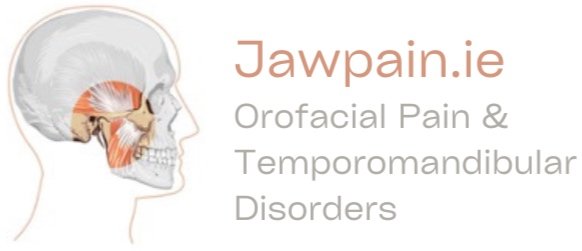Frequently Asked Questions
-
Most patients who are referred to Dr Murphy will have some degree of jaw or facial pain. The purpose of the initial consultation is to determine where this pain originates from? Is it dental? If not what could it be? Many orofacial pain complaints will masquerade as a toothache. Common examples of a referred toothache include jaw joint complaints (TMJ), jaw muscle complaints, or nerve pain (trigeminal neuralgia). The primary objective of the initial examination is to make an accurate diagnosis and following this a treatment plan will be given to the patient to reduce their pain.
-
The exact treatments will be determined by an accurate diagnosis. Jaw joint/ TMJ complaints will be treated differently to jaw muscle or nerve related complaints. Common examples of treatments include jaw behavioural therapy, jaw splint therapy, nerve blocks, jaw muscle injections, and steroid injections. Rarely is surgery a first line treatment option.
-
No. However a consultation report can be sent to your medical doctor, dentist or medical consultant.
-
Your appointment will be for 30-60 minutes.
-
In general NO is the answer. Jaw clicking is common in the general population. It is estimated that 30-50% of the population have a clicking jaw. Many people will have a longstanding jaw click for many years. No treatment is necessary unless the click changes (becomes louder, or more frequent), or if it is associated with jaw pain or jaw locking.
-
There are numerous splint designs and certainly they can aggravate not only the TMJ but can also change the bite / occlusion. It is universally accepted that all treatments should be conservative and there is no need to change ones bite to correct a TMJ problem. It is imperative that jaw splint therapy should not be used in isolation, but should be combined with a structured programme that manage day time jaw habits such as clenching.
-
This is not an uncommon scenario and if it is not accompanied by clinical symptoms such as pain or limited jaw movement, it may not be a problem. Many people have this precise clinical finding when a MRI is obtained of their TMJ. The indication for treatment should be based firstly on the clinical findings and never on MRI findings alone.
-
Patients may present with jaw pain, jaw clicking / locking, and headaches. These ‘TMJ specific’ symptoms may be associated with various other symptoms such as sensitive teeth, excessive tooth wear, tooth grinding etc.
-
There is a greater incidence of TMJ disorders in certain musicians. It will occur with greater frequency in those who use wind instruments and the violin.
-
It is very common for patients who suffer from TMJ to present with ear pain. This is caused by referred pain from the TMJ into the ear. These structures lie side by side.
-
TMJ disorders are musculoskeletal disorders, trigeminal neuralgia is a nerve related disorder. In general, Trigeminal neuralgia pain is sharp, shooting, like an electric nerve radiating through the face. It typically presents after 50 years. The pain can be spontaneous, not necessarily triggered by jaw movement. TMJ disorders are characterised by pain that is dull, achy, throbbing in quality. It presents in a younger age group, usually 20-40 year olds and is usually aggravated by jaw function.
-
Recent research has shown that the ‘bite’ does not play a significant role in the aetiology of TMJ disorders. In addition, orthodontic treatment similarly plays a very minor role when treating TMJ disorders.
-
Botox is rarely used when managing TMJ problems. It may have a role in treating aggressive clenching and grinding, when all other modalities have been provided and fail. In general Botox will have a therapeutic effect for six months. Bruxism is a long term disorder that needs to be managed accordingly.
-
Absolutely. It is not uncommon for patients with tender TMJs or jaw muscles to present with symptoms identical to that of a toothache. The same nerve supplies the teeth, TMJ and jaw muscles and ‘pain referral’ is not an uncommon phenomenon.
-
Tooth grinding in the general population is largely underreported. The diagnosis of tooth grinding is often made using the presenting signs (sensitive teeth, unexplained tooth pain, tooth wear or mobility) and symptoms (morning headaches, tightness and stiffness associated with the jaw in the morning, jaw locking).
-
Make sure you ask all the relevant questions and are happy with the answers given. If you are not happy with the answers seek a second opinion. If you were to purchase a new car, you would not go to a single car dealership. Be wholly committed to treatment before you start, as long term success is dependent on patient compliance.
